Yes, the ballerina character's name is Odette.
Odette, as Gillis tells us, lives to dance. We first see her standing aloof against a windowsill, gazing moodily into the night. She's not a snob or some sort of arrogant pseudo-princess. It's that she can't even enjoy an after-party with her snooty artsy friends because her muscles "long to be dancing still." Then she makes the mistake of leaving the party with a cloaked gentleman calling himself Vladimir Tepesch. If only she'd spent more time watching In Search Of... and less time mastering her art, she might have avoided her fate-- waking up later in the woods with her car missing and having to run 20 miles back to the theater where Greg, the poor man's Alexander Godunov (who had defected from the USSR just a year before this story saw publication), gapes at her and wants to know where she's been for three whole days. Remember those three days in case you ever find yourself in Odette's pointe shoes-- in classic vampire lore, the vampire's resurrection mocks Christ's; Gillis knows his stuff.
Anyway, Odette learns she's undead. She refuses to accept it even when Dracula transforms her partially into a bat. No, she has to spend her nights dancing rather than skulking around in the shadows sucking blood. I'll have you know Isadora Duncan simply adored skulking and sucking. But not our Odette. She goes on an extended dance tour, then returns to her apartment and throws herself into practice, only to discover as a soulless monster she no longer has an ear for her favorite composers. First Prokofiev, then Tchaikovsky devolve into "NOISE! NOISE! NOISE!!" This is the kind of reaction that puts a bit of a crimp in your dance career. Odette reminds me of some friends of mine who, when they turned 30, suddenly told me they couldn't relate to any of the new music and were becoming interested in blues and soft jazz. In other words, "I'm old now, so I hate music."
Actually, I'm a little puzzled as to how Odette was able to perform to their music for weeks before this breakdown. Maybe this particular symptom of being a vampire takes a few weeks to present. We never find out, but that's a relatively minor plot hole we have no time to investigate because Gillis quickly covers for himself with a brilliant inspiration, possibly the source image for the entire story: Odette finds she can use her vampiric powers to morph not only into a bat but also into a half-swan... or even a full one. She gets Anatoly (sounds like a Commie name if you ask me), her company's choreographer, to help her reconfigure great ballets into showcases for her amazing new abilities, but she can't escape the vampiric curse and it all ends pretty much the way Black Swan ended but with more self-impaling and none of the self-pleasuring.
And it also requires us to ignore that losing the spirit of music thing again, but maybe Odette comes up with some way to compensate. Earplugs and strictly counted beats or whatever. It's not as if music is all that important to dance, anyway.
While the page count reduces Gillis to telling rather than showing Odette's obsession with dance and her posthumous performance rebirth-- first a collage-like panel and later, after she starts using her metamorphic powers, a single panel with just the ballet titles-- the prima ballerina's plight still moves. She's truly done nothing to bring this curse upon herself and then she's propelled along a tragic path similar to the characters she danced during life, damning herself in a moment of weakness and rage. And ol' Dracula is a complete bastard. He cares only for beauty only so much as he can possess it, but his touch inevitably corrupts and destroys. Like the parasite he is, he'll move on to other victims. But Odette loses more than her soul, and even her ultimate triumph is couched in death and her sad isolation from that which she loves most.
John Buscema provides his usual sold storytelling, largely confining his layouts to the three-tier format. Each page is a little miracle of panel-to-panel continuity, but the real star here is Bob McLeod.
If I remember correctly, Buscema usually worked pretty loose and left a lot for the inkers to finish. As a result, this art job looks a lot more like McLeod's solo work than a strictly Buscema job might, or one inked by Tom Palmer, Ernie Chua or even Big John's preferred partner, his brother Sal. I've always admired McLeod's work on his solo efforts, and his figure construction and detail work-- such as how he deals with cheeks-- was always a bit Buscema-esque anyway, so they make a fine team here. I don't know how much of the black-spotting Buscema indicated in his pencils, but McLeod's use of dark shadows pooling around the characters or climbing the walls behind them works wonders in creating a subtle menacing mood. Dracula himself seems to loom out of darkness or carry his own shadows with him wherever he goes throughout this story, setting him somewhat apart as a malevolent force crawling up from Odette's own id as the vampire's power over her grows and distorts her life's work. McLeod also lays down gray tones and creates lighting effects during Odette's transformations with what appears to be airbrush. Reading some of these later Marvel mags, a lot of inkers seem to have been enchanted with the airbrush for tonal work as opposed to doing the traditional ink washes. I wonder if there's some Richard Corben influence going on there, or if the airbrush lent itself to faster turnaround times, or perhaps a little of both.
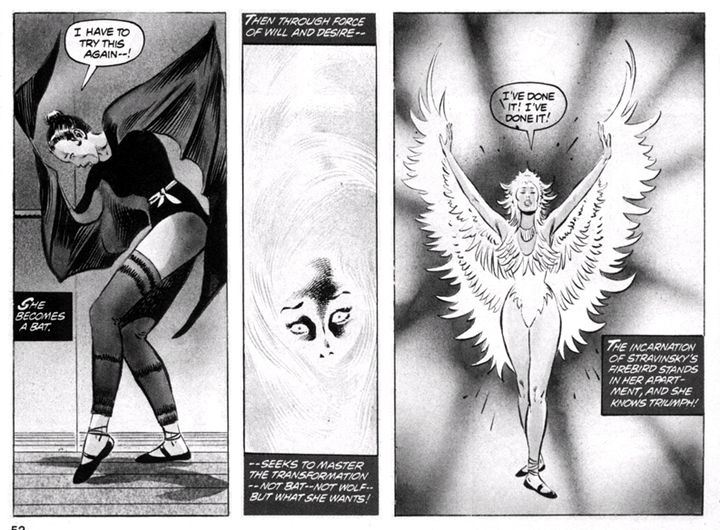 |
| Bob Mackie vampire. |


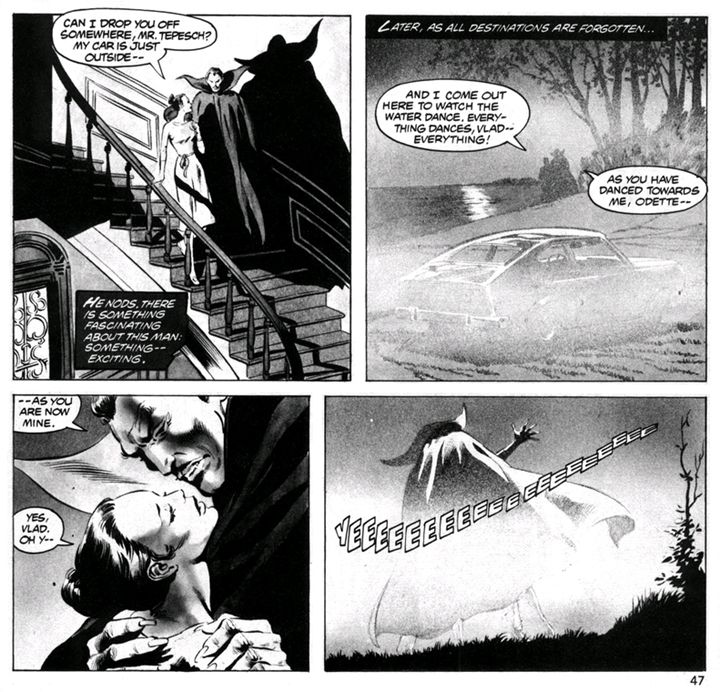
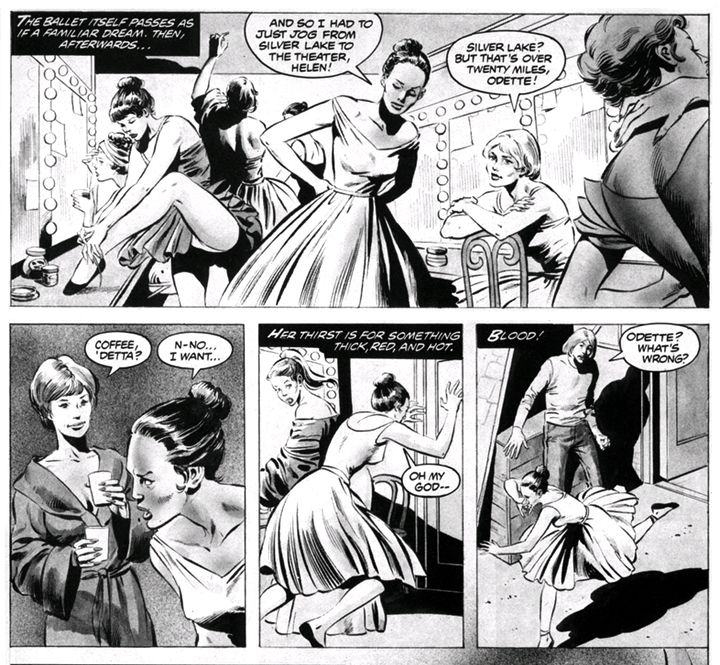
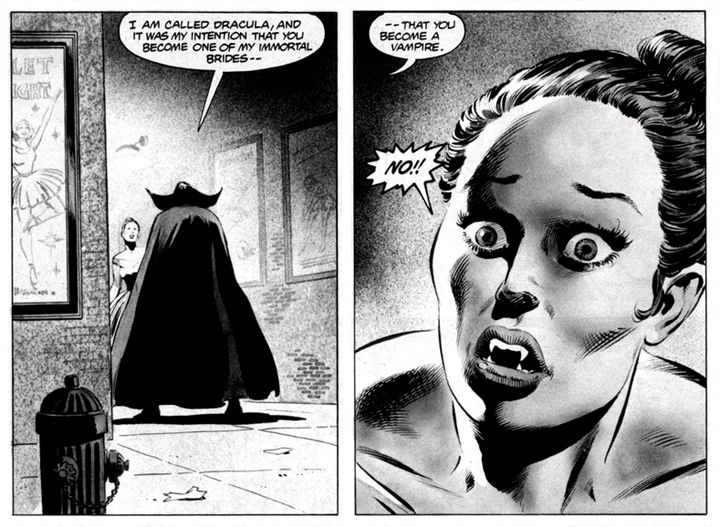
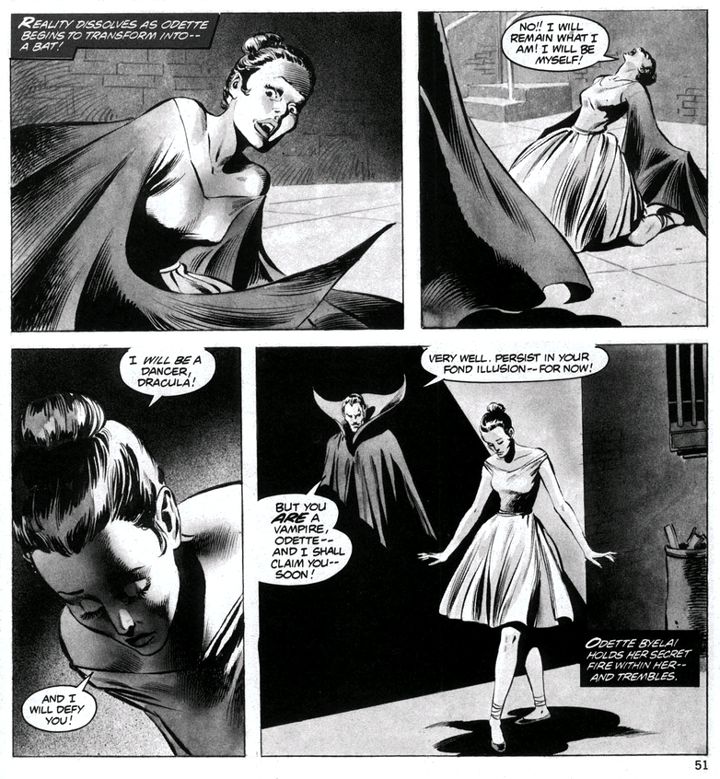
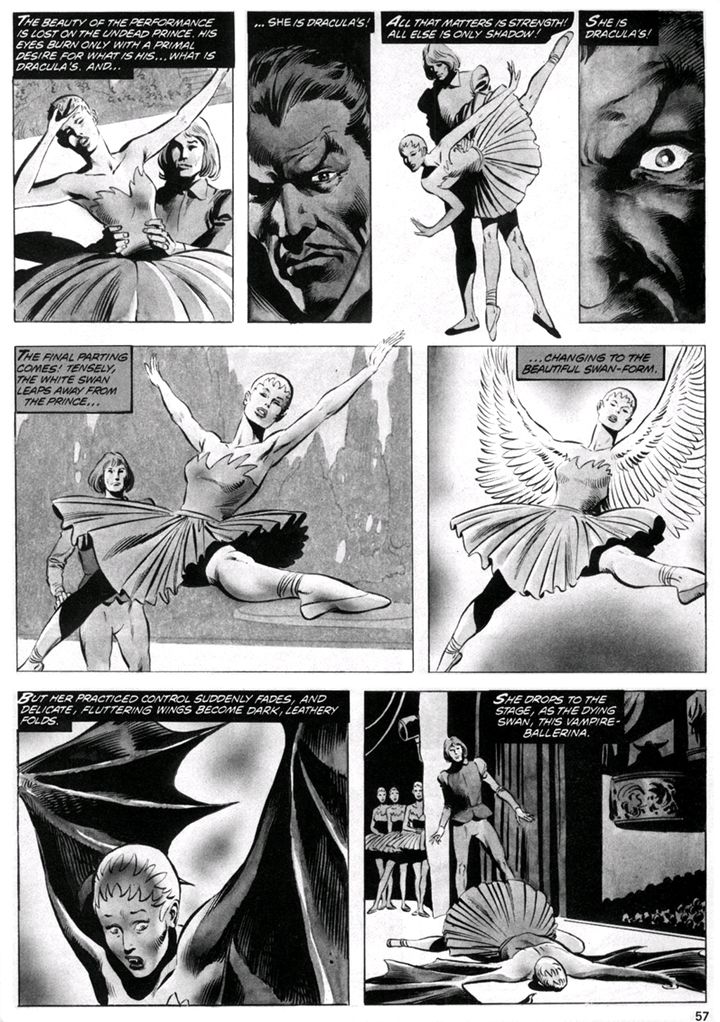
No comments:
Post a Comment